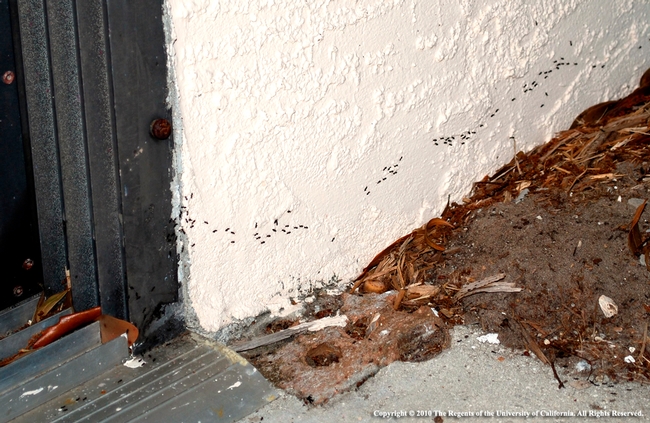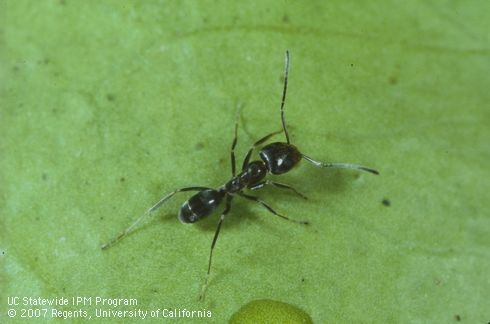We often experience ants in our homes when weather conditions change. They are typically looking for food, water, warmth, and/or protection from extreme weather conditions. Ants belong to the insect order Hymenoptera and are close relatives of bees and wasps. The most common outdoor ant found in California is the Argentine worker ant. The Argentine worker ant is approximately 3mm long, dark colored and does not sting. They have no natural enemies. Their colonies have multiple queens and only the queens lay eggs. An ant's life cycle moves from egg to larva to pupa to adult. Their nests are normally found in moist soils, under debris or along sidewalks and driveways. Argentine ants are drawn to sweet foods but will also feed on protein (e.g. dead bugs). The Argentine ant will venture up to 100 feet away from the nest to find food, water and shelter inside buildings. Once inside, if ants find food, they will continue to invade until the food source is removed and/or the entryway sealed.

Minor Indoor Problem (small trail of ants observed infrequently). Prevent further intrusion by:
1) Identifying the location where the ants are getting into the house. Inspect baseboards, floors, electrical outlets, vents, pipes, drains and walls for any entryways and seal them off (caulk is good for this). Destroy any nesting sites found close to the house. Cut back trees, shrubs or wooded material touching the house and clear away mulch or debris that is next to the house.
2) Clean up food and water sources in the home. All sources of “attractive” food should be removed or securely sealed. Use soapy water to kill ants and eliminate their trails.
Moderate (trails of hundreds of ants) and Severe (several hundred to thousands of ants continue to invade for weeks or months). Supplement steps 1 and 2 above with the addition of bait stations as follows:

Following the 3-step approach above should correct home ant invasions. For more information see the UC IPM Pest Notes on ants.
The UC Master Gardeners of Butte County are part of the University of California Cooperative Extension (UCCE) system. To learn more about us and our upcoming events, and for help with gardening in our area, visit our website. If you have a gardening question or problem, email the Hotline at mgbutte@ucanr.edu or call (530) 538-7201.